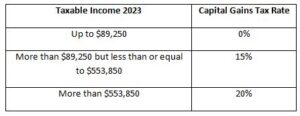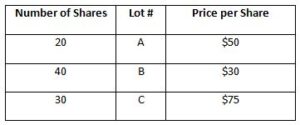When asked about their financial health, many people immediately think of their credit score. While that is an important component, it’s far from the whole story. As an analogy, think about going to get your physical and the doctor only takes your temperature. But what about blood pressure, cholesterol levels and so on? Yep, understanding your health requires you to look at a number of factors. This month I’ll go over some of the more common aspects of analyzing your financial health.
Income. The amount of money earned from various sources such as salary, wages, investments and business activities. Obviously this is a key number that drives many of the health considerations that follow.
Expenses. The money spent on necessities, discretionary purchases, bills and debt repayments. Expenses, along with income, underlie the rest of your financial health. You should be spending less than you earn.
Savings. “It’s not what you make – it’s what you keep.” Savings drive the success of your emergency fund, retirement fund and other investments for future requirements. Your level of savings directly impacts your net worth (below) and retirement success.
Net Worth. Net worth is simply the difference between all of your assets and all of your liabilities. Net worth varies from person to person, but watching it for an upward trend is very helpful in determining whether you’re on track. Ideally, your net worth should be growing every year as your investments grow and your debt is reduced.
Debt Management. The management of outstanding debts such as loans, mortgages and credit card balances. One measure of your health here is something called the debt-to-income ratio. It’s calculated by dividing your monthly debt payments by your gross monthly income. Lenders like to see this number less than 20% and they are very concerned when it gets over 36%.
Budgeting. Planning and allocating income to different expense categories to ensure financial stability and meet financial goals. Budgeting can really relieve much of your financial stress because you know where your money is going which makes it much easier to redeploy it if necessary. Even without any historical data (which takes a bit to collect), there’s a decent rule of thumb to guide you. It’s the 50/30/20 rule. It merely suggests spending 50% of you after-tax income on life’s necessities, 30% on things that are more in the discretionary category and 20% on savings and debt reduction.
Investments. Allocating funds to various investment vehicles such as stocks, bonds, real estate and retirement accounts to grow wealth over time.
Credit Score. A numerical representation of an individual’s creditworthiness, which impacts borrowing ability and interest rates on loans. A score over 750 is a good initial goal.
Emergency Fund. Savings set aside to cover unexpected expenses or financial emergencies. This fund comes into play whenever significant and unexpected financial needs arise. Suppose you lose your job, need a new roof, need some medical procedure not mainly covered by insurance and so forth. Most of us know that the rule of thumb here is to have at least 3-6 months’ worth of expenses in this fund. If you don’t currently have this fund, it’s pretty easy to start. Just have a portion of each month’s income directed to a special account that’s earmarked for emergencies.
Retirement Fund. These savings will be needed when you stop working. While it’s never too late to start, it’s best to start while you’re young to let your investments grow over time. My favorite vehicle for retirement savings is a Roth IRA. A 401(k), especially if your employer provides matching funds, is also very important for long-term wealth building. There are also individual Traditional IRAs as well as regular taxable investments. We feel that it’s best to invest 15-20% of your net pay into this fund. Setting up automatic withdrawals for this is a great way to accumulate what you need for a comfortable retirement.
Life Insurance. Insurance doesn’t grow your finances, but rather it protects them. It would be very disheartening to be successfully building strong financial health only to have it wiped out buy some disaster. Term life insurance can be appropriate for most people and the amounts should be reviewed if you add dependents.
Just like your physical health, it’s important to look at a comprehensive picture of your financial health. Want to get an unbiased assessment of your situation? We can review your financial health, or any other financial matters, in a no-charge, no-obligation initial meeting. Please visit our website or give us a call at 970.419.8212 to set up an in-person or virtual meeting.
This article is for informational purposes only. This website does not provide tax or investment advice, nor is it an offer or solicitation of any kind to buy or sell any investment products. Please consult your tax or investment advisor for specific advice.






